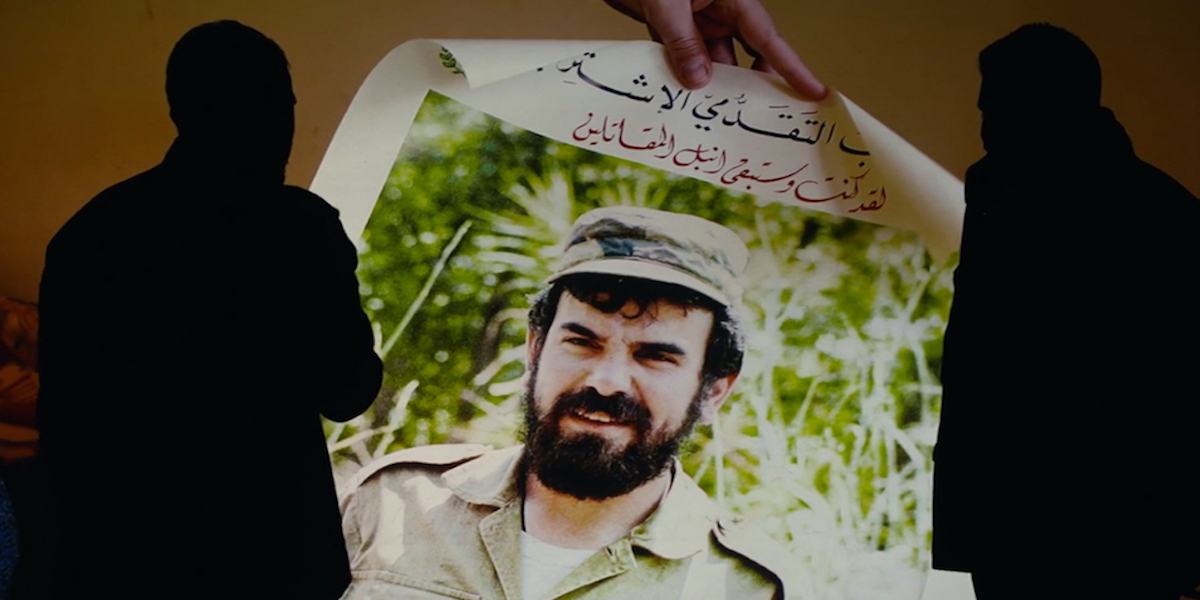The second solo exhibition by the Turner Prize-winning artist Lawrence Abu Hamdan has been unveiled at Maureen Paley.
The exhibition includes a newly realised installation of the video work Once Removed (2019) which was first shown in Sharjah Biennial 14, UAE (2019)(commissioned by Sharjah Art Foundation) and was also included in the Biennale of Sydney, Australia earlier this year. This is the first time it is being shown in the UK. As well, the exhibition presents pieces from his most recent project, For the Otherwise, Unaccounted (2020) that consists of a series of thermographic prints that investigate the idea of birthmarks corresponding to reincarnation. This exhibition presents the first iterations of a new body of work he is developing that explores reincarnation, not as a scientific fact, but as a medium for justice.
Once Removed, 2019 HD video, colour, sound, 28 minutes.
This dual-channel video installation is a portrait of Bassel Abi Chahine, a 31-year-old writer and historian who has managed to obtain the most comprehensive inventory of scarce objects, photographs and interviews of the People Liberation Army (PLA) and Progressive Socialist Party (PSP) militia from the Lebanese civil war. His obsessive analysis, collection and unprecedented research into this one militia was done in pursuit of material to reconstitute flashbacks and unexplainable memories from a previous life. Through his research, Abi Chahine realised that his own lucid memories of a war he had not lived were because he was the reincarnation of a soldier Yousef Fouad Al Jawhary, who died aged 16 on February 26, 1984, in the town of Aley. The scenography of the film attempts to establish the conditions to listen to a new category of witness, one that is yet to be accepted into the production of history.
For the Otherwise Unaccounted, 2020 thermographic prints, text panels and wooden shelves
In 1997 the psychiatrist and professor at Virginia School of Medicine, Dr Ian Stevenson published his life work, “REINCARNATION AND BIOLOGY: The Etiology of Birthmarks”. The book was the result of fieldwork in Asia, Turkey, Lebanon, across Africa and Alaska, in which he interviewed and investigated claims of reincarnation with particular attention to the correspondence of birthmarks on the reincarnated subject to the circumstances of their death in their previous lives. Stevenson’s book is a strange and beautiful mix of narrative literature, forensic analysis, biological data, historiography, theology and conflicting scientific hypotheses. In focusing on the claim to reincarnation rather than the ethnography of a single people, Stevenson’s monologue chronicles a collectivity of people who exist at the threshold of the law and for whom injustices and violence have otherwise escaped the historical record due to colonial subjugation, corruption, rural lawlessness and legal amnesty. The raised ink renderings of these birthmarks highlight the ways in which testimony is stored in the body. This work isolates the birthmarks from their bodies and in this way archives the only surviving remnants of historical erasure, such as forced religious conversions, destruction of language and property, colonial occupation and territorial annexation. (Texts by Lawrence Abu Hamdan)
Read More About Lawrence Abu Hamdan

